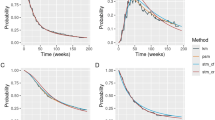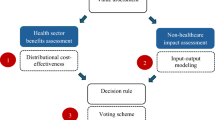Abstract
Background: Nowadays, an increasing number of discrete-choice experiments (DCEs) incorporate cost as an attribute. However, the inclusion of a cost attribute, particularly within collectively funded healthcare systems, can be challenging because health services or goods are generally not traded in a market situation and individuals are not used to paying for a service or a good at the point of consumption.
Objective: To examine whether the inclusion of a cost attribute in a DCE results in different preferences regarding a surgical treatment for primary basal cell carcinoma (BCC) compared with a DCE without a cost attribute.
Methods: A randomized study was performed in which the impact of a cost attribute on the general public’s preferences for a surgical treatment (Mohs micrographic surgery [MMS] or standard excision [SE]) to remove BCC was examined. This was done by comparing the outcomes of two DCEs, one with a cost attribute (DCE_cost) and one without (DCE_nocost). Six attributes (recurrence, re-excision, travel time, surgical time, waiting time for surgical results, costs) and their levels were selected, based on results of a clinical trial, a cost-effectiveness study, a review and a focus group of patients who had recently received treatment for BCC. Outcomes of both DCEs were compared in terms of theoretical validity, relative importance of the attributes and the rank order of preferences.
Results: A total of 615 respondents (n = 303 for DCE_nocost; n = 312 for DCE_cost) were interviewed by telephone. This gave an overall response rate of 38%.
Respondents in DCE_nocost preferred a surgical treatment with a lower probability of recurrence, lower surgery time, lower waiting time and no risk for a re-excision. Respondents in DCE_cost showed the same preferences, but also preferred a treatment with less travel time and lower costs. Overall, respondents in both DCEs showed the same preference for a surgical treatment: MMS was preferred over SE.
Conclusion: Results suggest that, in this population, the inclusion of a cost attribute in a DCE leads to the same preference regarding a surgical treatment to remove BCC as a DCE without a cost attribute. However, further research in different settings is needed to confirm these findings.









Similar content being viewed by others
References
Lancsar E, Louviere J. Conducting discrete choice experiments to inform healthcare decision making. Pharmacoeconomics 2008; 26 (8): 661–77
Aristides M, Weston AR, Fitzgerald P, et al. Patient preference and willingness to pay for Humalog Mix25 relative to Humulin 30/70: a multicountry application of a discrete-choice experiment. Value Health 2004; 7 (4): 442–54
Phillips KA, Maddala T, Reed Johnson F. Measuring preferences for health care interventions using conjoint analysis: an application to HIV testing. Health Serv Res 2002; 37: 1681–705
Hanson K, McPake B, Nakamba P, et al. Preferences for hospital quality in Zambia: results from a discrete choice experiment. Health Econ 2005; 14: 687–701
Ossa DF, Briggs A, McIntosh E, et al. Recombinant erythropoietin for chemotherapy-related anaemia. Pharmacoeconomics 2007; 25 (3): 223–37
Porteous T, Ryan M, Bond CM, et al. Preferences for selfcare or professional advice for minor illness: a discretechoice experiment. Br J Gen Pract 2007; 57: 911–7
Chuck A, Adamowicz W, Jacobs P, et al. The willingness to pay for reducing pain and pain related disability. Value Health 2008; 12 (4): 498–506
Slothuus Skjoldborg U, Gyrd-Hansen D. Conjoint analysis: the cost-variable. An Achilles’heel? Health Econ 2003; 212: 479–91
Verlegh PWJ, Schifferstein HNJ, Wittink DR. Range and number-of-levels in derived and stated measures of attribute importance. Market Lett 2002; 13: 41–52
Bryan S, Buxton M, Sheldon R, et al. Magnetic resonance imaging for the investigation of knee injuries: an investigation of preferences. Health Econ 1998; 7 (7): 595–603
De Vries E, van de Poll-Franse LV, Louwman WJ, et al. Predictions of skin cancer incidence in the Netherlands up to 2015. Br J Dermatol 2005; 152 (3): 481–8
Essers BA, Dirksen CD, Nieman FH, et al. Cost-effectiveness of Mohs micrographic surgery vs surgical excision for basal cell carcinoma of the face. Arch Dermatol 2006; 142 (2): 187–94
Mosterd K, Krekels GA, Nieman FH, et al. Surgical excision versus Mohs micrographic surgery for primary and recurrent basal cell carcinoma of the face: a prospective randomised trial with 5-years’ follow-up. Lancet Oncol 2008; 12: 1149–56
Smeets NWJ, Krekels GAM, Ostertag JU, et al. Surgical excision versus Mohs micrographic surgery for basal cell carcinoma of the face: a prospective randomised trial. Lancet 2004; 364: 1766–72
Thissen MR, Neumann HA, Schouten LJ. A systematic review of treatment modalities or primary basal cell carcinoma. Arch Dermatol 1999; 135: 1177–83
Louviere JJ, Hensher DA, Swait JD. Stated choice methods: analysis and application. Cambridge: University Press, 2000
Huber J, Zwerina K. The importance of utility balance in efficient choice designs. J Mark Res 1996; 8: 307–17
Vick S, Scott A. Agency in health care: examining patients preferences for attributes of the doctor-patient relationship. J Health Econ 1998; 17: 587–605
Scott A. Eliciting GPs’ preferences for pecuniary and non-pecuniary job characteristics. J Health Econ 2001; 20: 329–47
Ryan M, Wordsworth S. Sensitivity of willingness to pay estimates to the level of attributes in discrete choice experiments. Scott J Polit Econ 2000; 47: 504–24
Greene WH. Limdep version 8.0. users manual. New York: Econometric Software Inc., 1995
Malhotra NK, Birks DF. Marketing research: an applied approach [updated 2nd european edition]. Harlow: Prentice Hall, 2006
Richardson G, Bojke C, Kennedy A, et al. What outcomes are important to patients with long term conditions? A discrete choice experiment. Value Health 2009; 12: 331–9
McIntosh E. Using discrete choice experiments within a cost-benefit analysis framework. Pharmacoeconomics 2006; 24 (9): 855–68
Kjaer T, Bech M, Gyrd-Hansen D, et al. Ordering effects and price sensitivity in discrete-choice experiments: need we worry? Health Econ 2006; 15: 1217–28
Islam T, Louviere JJ, Burke PF. Modeling the effects of including/excluding attributes in choice experiments on systematic and random components. Int J Res Market 2007; 24 (4): 289–300
Acknowledgements
No sources of funding were used to assist in the preparation of this study. The authors have no conflicts of interest that are directly relevant to the content of this study.
Author information
Authors and Affiliations
Corresponding author
Electronic supplementary material
Rights and permissions
About this article
Cite this article
Essers, B.A.B., van Helvoort-Postulart, D., Prins, M.H. et al. Does the Inclusion of a Cost Attribute Result in Different Preferences for the Surgical Treatment of Primary Basal Cell Carcinoma?. Pharmacoeconomics 28, 507–520 (2010). https://doi.org/10.2165/11532240-000000000-00000
Published:
Issue Date:
DOI: https://doi.org/10.2165/11532240-000000000-00000




